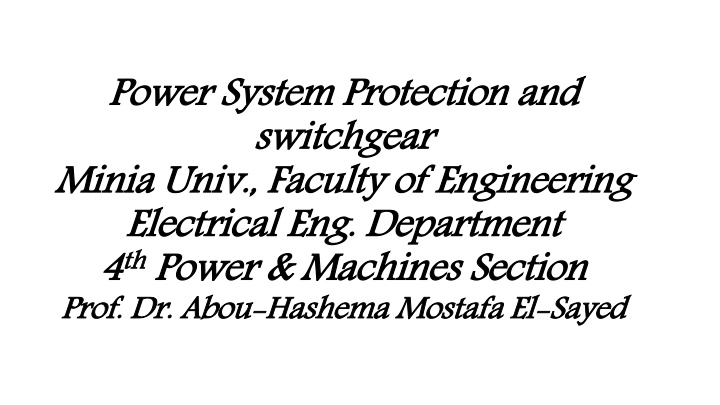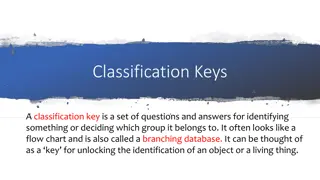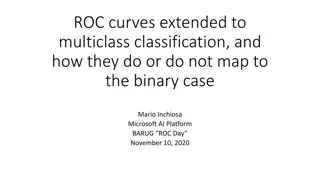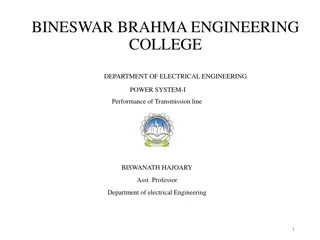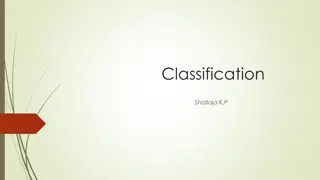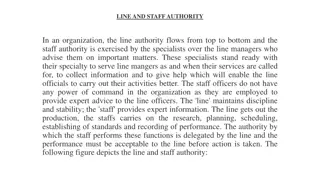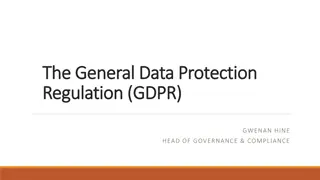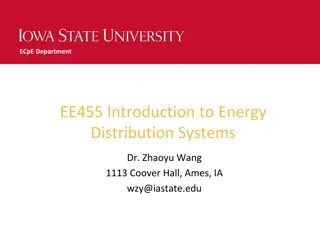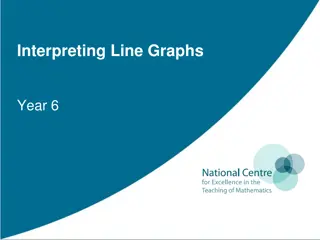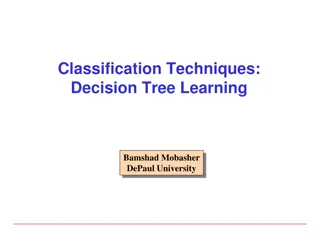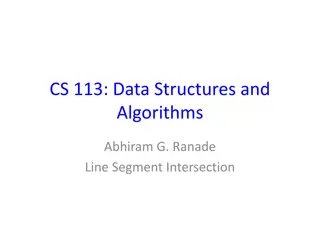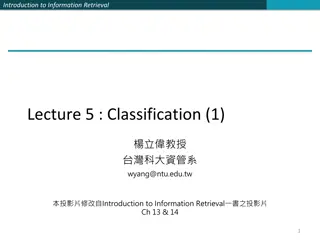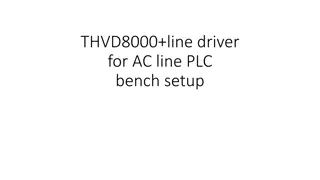Line Protection Techniques and Classification
Line protection is crucial in electrical power systems to prevent faults on transmission lines connecting generating sources with usage points. Various protective techniques are employed, such as instantaneous overcurrent, time-overcurrent, directional protection, and more. Electrical power lines are classified based on voltage levels, including distribution, subtransmission, and transmission lines, further divided into high voltage, extra-high voltage, and ultra-high voltage categories. Understanding the factors influencing protection system selection is essential for ensuring power system reliability.
Download Presentation

Please find below an Image/Link to download the presentation.
The content on the website is provided AS IS for your information and personal use only. It may not be sold, licensed, or shared on other websites without obtaining consent from the author.If you encounter any issues during the download, it is possible that the publisher has removed the file from their server.
You are allowed to download the files provided on this website for personal or commercial use, subject to the condition that they are used lawfully. All files are the property of their respective owners.
The content on the website is provided AS IS for your information and personal use only. It may not be sold, licensed, or shared on other websites without obtaining consent from the author.
E N D
Presentation Transcript
Power System Protection and switchgear Minia Univ., Faculty of Engineering Electrical Eng. Department 4 4th thPower & Machines Section Prof. Dr. Power System Protection and switchgear Minia Univ., Faculty of Engineering Electrical Eng. Department Power & Machines Section Prof. Dr. Abou Abou- -Hashema Hashema Mostafa Mostafa El El- -Sayed Sayed
LINE PROTECTION LINE PROTECTION
LINE PROTECTION Most faults experienced in a power system occur on the lines connecting generating sources with usage points. Just as these circuits vary widely in their characteristics, configurations, lengths, and relative importance, so do their protection schemes.
LINE PROTECTION Classification of Electrical Power Line Alternating current lines are commonly classified by function, which is related to voltage level. While there are no utility-wide standards, typical classifications are as follows: 1- Distribution (2.4 34.5 kV): Circuits transmitting power to the final retail outlets. 2- Subtransmission (13.8 138 kV): Circuits transmitting power to distribution substations and to bulk retail outlets. 3- Transmission (69 765 kV): Circuits transmitting power between major substations or interconnecting systems, and to wholesale outlets. Transmission lines are further divided into: I- High voltage (HV): 115 230 kV II- Extra high voltage (EHV): 345 765 kV III- Ultra high voltage (UHV): greater than 765 kV.
LINE PROTECTION Direct-current systems can be classified as follows: 1- Low voltage (24 250 V): Auxiliary power in power plants and substations; control circuits and, occasionally, utilization power in some industrial plants. 2- Medium voltage (300 600 V): Transportation industry. 3- High voltage (greater than 600 V): Long distance bulk transmission, submarine, and major system interconnections.
LINE PROTECTION Techniques for Line Protection There are seven protective techniques commonly used for isolating faults on power lines: a- Instantaneous overcurrent b- Time-overcurrent c- Directional Instantaneous and/or time-overcurrent d- Step time-overcurrent e- Inverse time-distance f- Zone distance g- Differential current h- Pilot relaying.
LINE PROTECTION Selecting a Protection System Several fundamental factors influence the final choice of the protection applied to a power line: 1- Type of circuit: Cable, overhead, single line, parallel lines, multiterminals, etc. 2- Line function and importance: Effect on service continuity, realistic and practical time requirements to isolate the fault from the rest of the system. 3- Coordination and matching equipment on the associated lines and systems. requirements: Compatibility with To there three considerations must be added economic factors and the relay engineer s preferences based on his or her technical knowledge and experience.
